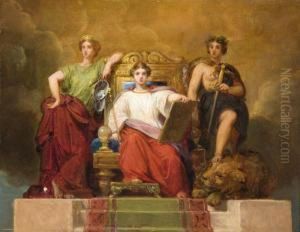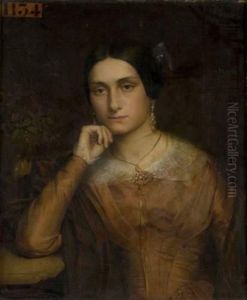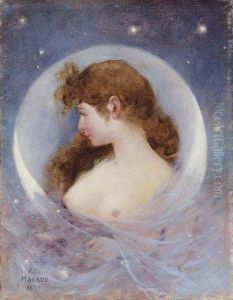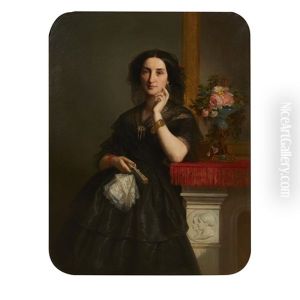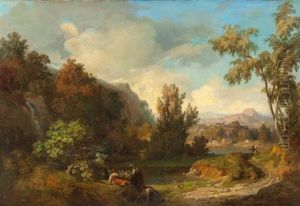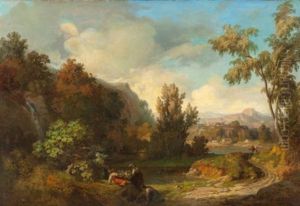Dominique Magaud Paintings
Dominique Magaud was a French painter born on August 4, 1817, in Marseille, France. He was primarily known for his religious works and portraits. Magaud's artistic journey began under the guidance of Augustin Aubert and later Émile Loubon, both of whom were instrumental in shaping his early artistic development. He then moved to Paris to continue his studies and was influenced by the academic art movement, which was prominent during the 19th century.
Magaud returned to Marseille after his studies and became deeply involved in the local art scene. He was a participant in the creation of the Marseille School, a group of artists who focused on depicting the landscapes and daily life of the Provence region. His work during this period often reflected the traditional and religious values that were important to the people of this area.
His religious paintings were particularly appreciated, and he received many commissions for church decorations and religious works. One of his significant contributions was the decoration of the major seminary chapel of Marseille. Magaud's style was characterized by a harmonious composition, meticulous attention to detail, and a use of color that imbued his works with a sense of warmth and spirituality.
Apart from his religious paintings, Magaud also gained recognition for his portraits. He had the ability to capture not just the physical likeness of his subjects but also their character and social status. This made him a sought-after portraitist among the bourgeoisie and aristocracy.
Later in his career, Magaud became a professor at the School of Fine Arts in Marseille and influenced a new generation of artists. His dedication to his craft and his role as an educator left a lasting imprint on the art community in the region.
Dominique Magaud passed away on October 24, 1899, in Marseille. His legacy continued through the works he left behind and the impact he had on his students and the Marseille School. Today, his works can be found in various museums and collections, serving as a testament to his artistic contributions.
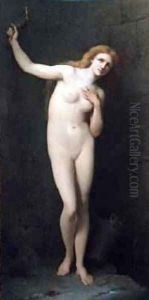

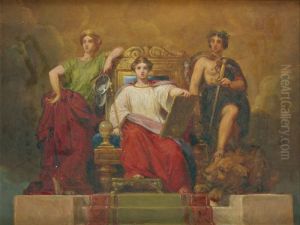
![Jeremie Reprochant Aux Juifs Leurs Dereglements [ ; Jeremiah Reproaching The Jews Fot Their Excesses ; Oil On Canvas Signed And Dated 1852]](https://www.niceartgallery.com/imgs/786874/s/dominique-magaud-jeremie-reprochant-aux-juifs-leurs-dereglements-jeremiah-reproaching-the-jews-fot-their-excesses-oil-on-canvas-signed-and-dated-1852-d60b6391.jpg)
